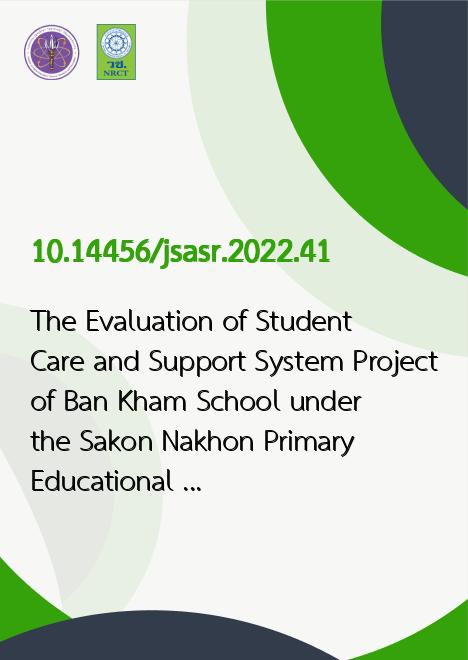
|
The Evaluation of Student Care and Support System Project of Ban Kham School under the Sakon Nakhon Primary Educational Service Area Office 3 |
|---|---|
| รหัสดีโอไอ | |
| Creator | Danprai Seemakam |
| Title | The Evaluation of Student Care and Support System Project of Ban Kham School under the Sakon Nakhon Primary Educational Service Area Office 3 |
| Publisher | DR.KEN Institute of Academic Development and Promotion |
| Publication Year | 2565 |
| Journal Title | International Journal of Sociologies and Anthropologies Science Reviews |
| Journal Vol. | 2 |
| Journal No. | 6 |
| Page no. | 33-44 |
| Keyword | Project Evaluation, Student Support System, Ban Kham School |
| URL Website | https://so07.tci-thaijo.org/index.php/IJSASR/about |
| Website title | https://so07.tci-thaijo.org/index.php/IJSASR/article/view/1998 |
| ISSN | 2774-0366 |
| Abstract | The student support system is one of the processes in the educational administration of educational institutions that will provide assistance to students with clear procedures and tools. Said by the participation of personnel and related networks both inside and outside the school, such as the basic education committee, community parents, administrators, all teachers, etc. The purpose of this research was to evaluate the project of the student support system at Ban Kham School under Sakon Nakhon Primary Educational Service Area Office 3 by using the CIPPIEST Model. A total of 220 contributors in this research were involved in the implementation of the project, comprising: (1) 2 project coordinators, (2) The committee of basic education institutions who participated in the project amounted to 7 people, (3) 11 teachers participating in the project, and (4) parents of 200 students participating in the project. Research tools include: Three questionnaires for basic education committees, teachers, and parents were questionnaires on a 5-level estimation scale. And the interview form for the project coordinator is a structured interview. The data were analyzed using frequency distribution statistics, and percentage values. Analysis of general data, mean, and standard deviation. Data analysis on opinion level and content analysis for feedback analysis and interview form. The results showed that: (1) The overall contextual assessment results were at the most appropriate level. (2) The overall assessment of inputs is appropriate at a high level. (3) The overall process evaluation results are appropriate at a high level. (4) The overall productivity assessment results are appropriate at a high level; (4.1) The overall impact assessment results are appropriate at a high level. (4.2) The overall efficacy evaluation results were appropriate at a high level. (4.3) The overall sustainability assessment results are at the most appropriate level. And (4.4) the results of the overall transmission assessment are very appropriate. |
